Lower back pain is becoming so common in today’s generation because of the stressful schedule, wrong body postures, workouts without professional trainers, etc. Regardless of the reason, one of the most effective ways to cope with it is to practice yoga for back pain.
Yoga is a popular and risk-free type of exercise. It is often associated with stress alleviation and relaxation, but it can also help you reduce back pain and maintain a healthy spine.
Yoga poses, known as asanas, are beneficial because they stretch and strengthen key back muscles. It is a low-impact yet effective way to relax tight muscles and build strength—which can help relieve lower back pain.
Yoga for back pain relief should be done with precautions and as part of online yoga courses. It is because not all yoga postures for back pain are equal. Some asanas may cause more pain if you don’t follow the precautions and practice those poses without care.
Expert tip: You must work on yourself to get stronger, more flexible, and more stable. Another crucial thing that many people miss is that they think of yoga as a physical activity only. However, it also includes breathing exercises and meditation. So, you should also work on some pranayama or breathing exercises to achieve strength, flexibility, and stability.
Having said that, let’s discuss the reasons behind this pain, and the most effective back pain yoga poses that you must be doing regularly.

Reasons and Causes of Lower Back Pain
Each person experiences general lower back pain differently. But for most people, it is a persistent, unsettling aspect of their lives that doesn’t appear to have a clear medical cause.
Numerous factors can affect the complexity of the causes of chronic lower back pain, including:
- postural patterns
- muscular tension
- mental stress and anxiety
- lack of exercise or too much exercise
- Long hours of sitting at the desk
- old injuries
Postural irregularities, which cause an imbalance in the fascia and muscle tissues, are the primary causes of lower back pain. Repeated motions or ingrained behaviors, such as prolonged sitting or reclining, are postural distortions.
Today, the majority of individuals spend their days sitting down. Due to tight hip flexors (quadriceps and psoas) brought on by this sedentary lifestyle, the front of the vertebrae may compress. This can eventually cause (for example) herniated discs by causing the lumbar curvature to flatten out.
Effective Yoga Poses for Lower Back Pain Relief
Below are some of the proven yoga asanas for lower back pain relief that you must be doing on a regular basis.
1. Adho Mukha Svanasana (Downward-Facing Dog Pose)
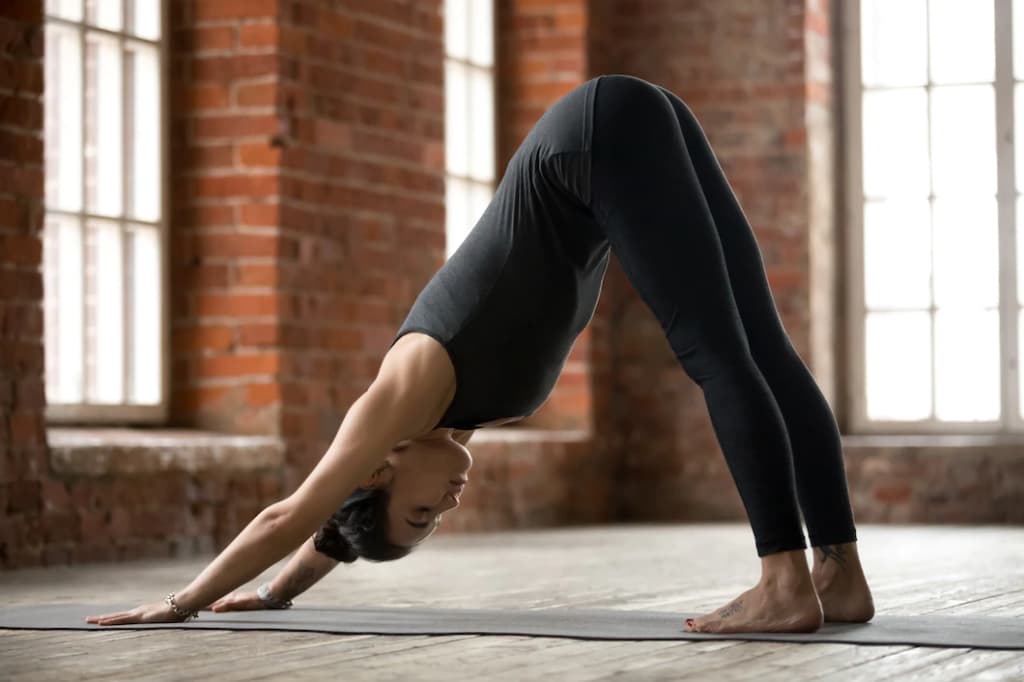
The muscles that assist your lower back, support your spine, and enable you to stand and move objects are known as back extensors. These are the focus of this traditional yoga pose, which provides an excellent total-body stretch. It is an effective yoga pose for low back pain.
How to do Downward-facing Dog pose?
- Begin by bending your knees and putting your hands in front of your shoulders.
- Pull your tailbone up and toward the ceiling by pressing back and separating your knees from the ground.
- Extend your hamstring stretch by pressing your heels into the floor.
- Hold for 5 to 10 breaths before repeating 5 to 7 times.
2. Balasana (Child’s Pose)
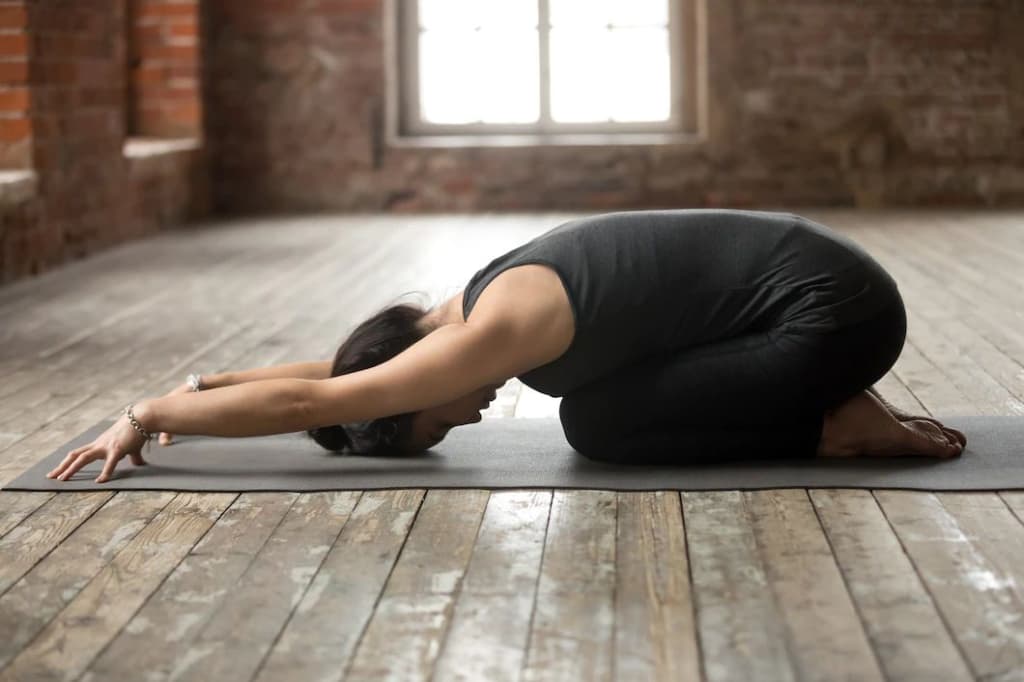
Even though you relax in this yoga for back pain, the child’s pose is an active pose that stretches the back. After a long, exhausting day, it’s also a fantastic stress reliever before bed.
How to do Balasana?
- Begin by descending on all fours and extending your arms straight in front of you.
- Sit back so your glutes (butt muscles) rest just above your heels but not in contact with them.
- Hold 5 to 10 breaths for a good, soothing stretch, and then repeat as needed.
3. Eka Pada Rajakapotasana (Pigeon Pose)
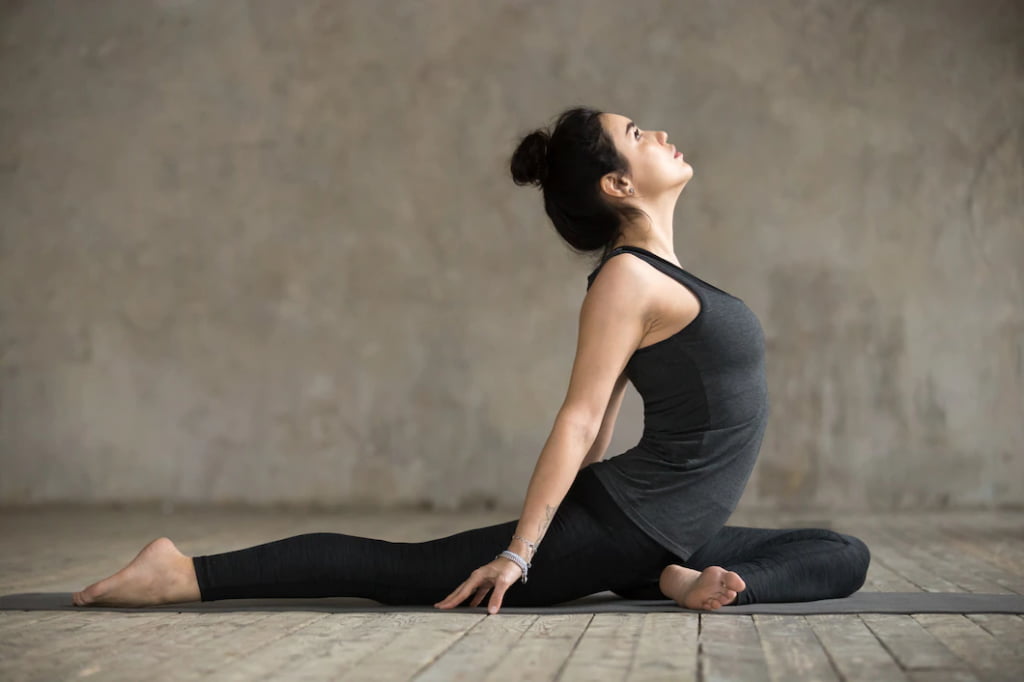
The pigeon yoga pose stretches the hip rotators and flexors, although it might be difficult for beginners. It is one of the most logical poses of yoga for back pain relief. It stretches the hips and exacerbates lower back pain.
How to do Pigeon Pose?
- Begin in the downward-facing dog position with your feet together.
- Then, move your left knee forward and out to the left until it is virtually perpendicular to your right leg.
- Lower both legs to the ground.
- Only experienced Pigeon posers should lift their rear foot off the ground and inward toward their backs for an added hamstring stretch. Alternatively, you can keep your back right leg straight behind you.
- After five to ten breaths in the posture, switch to the opposing side and repeat as needed.

4. Utthita Trikonasana (Triangle Pose)
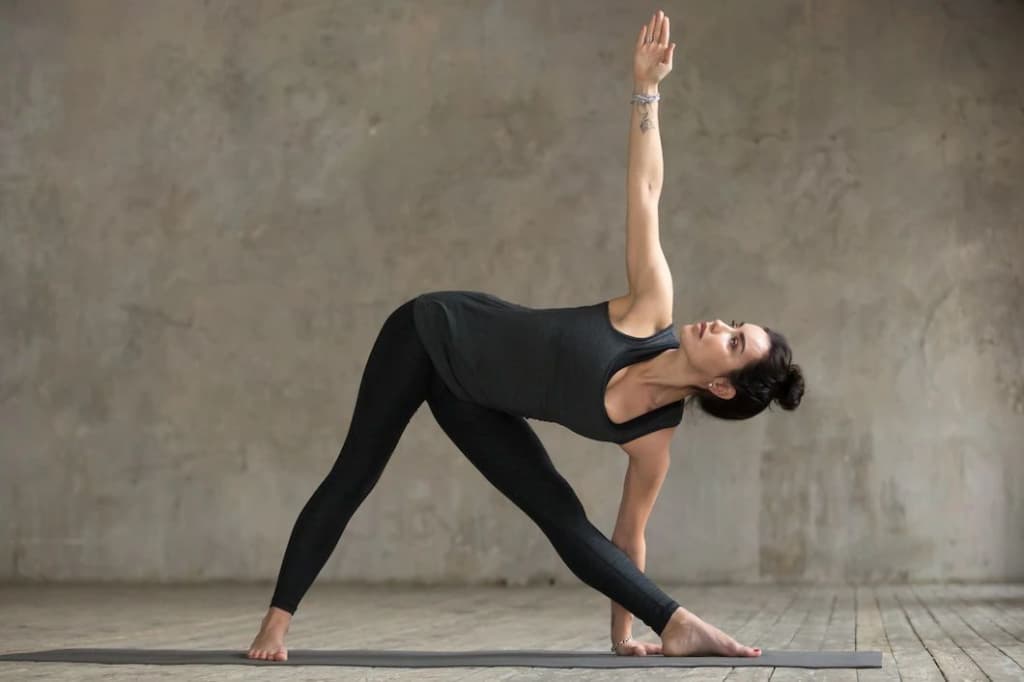
The triangle pose helps to stretch the muscle fibers along your outside hip while also strengthening your back and legs (your IT, or iliotibial, band). It is among the most effective yoga postures for back pain.
How to do Triangle Pose?
- Set up a straight stance with your feet close together.
- Lunge back three to four feet with your left foot while angling it outward at a 45-degree angle.
- While maintaining the straight right and left legs, tilt your chest to the side and open the posture by reaching your right arm toward the floor and your left arm toward the ceiling.
- Stoop as low as you can while maintaining a straight back.
- At first, you might be unable to touch the ground with your right arm. Once you’ve taken five to ten breaths in the posture, transfer to the opposite side and repeat as necessary.
5. Chakravakasana (Cat-Cow Pose)
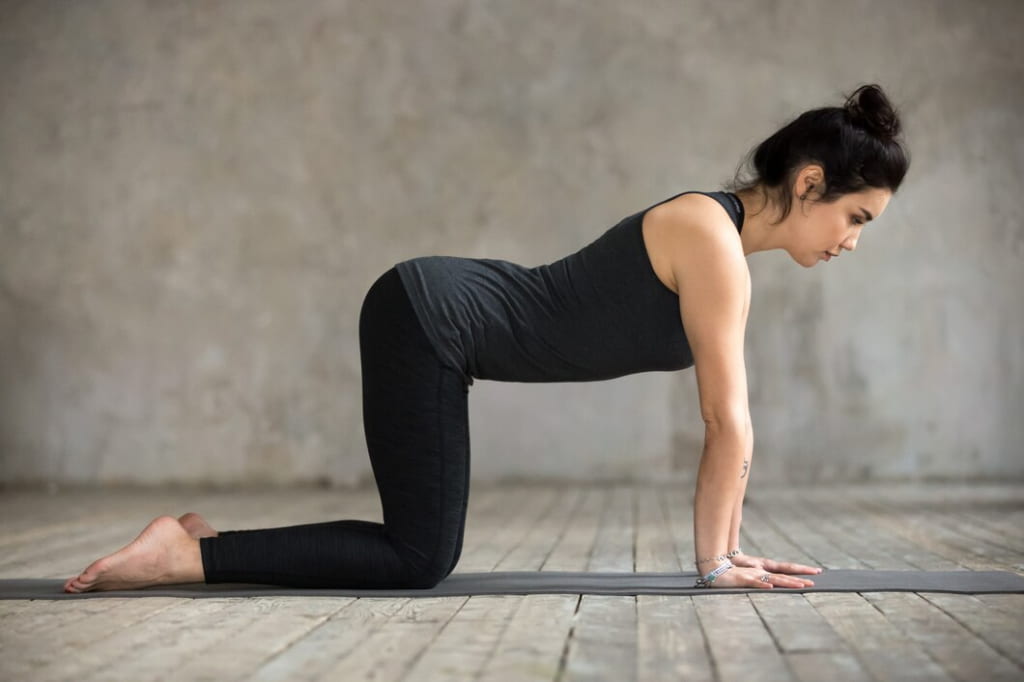
Cat and cow stretch, whether done as a part of a yoga regimen or as a warm-up for another workout, is good yoga for lower back pain relief. You must include it in your list of lower back pain exercises.
How to do Cat and Cow Pose?
- From an all-fours position, slowly press your spine and arch your back to enter the Cat pose.
- After a brief period of holding, switch to the Cow position by elevating your head, tucking your tailbone, and pulling your shoulder blades back.
- Your spine is helped to shift from Cat to Cow, placing it in a neutral posture and allowing your muscles to relax and relieve stress.
- Repeat ten times, gracefully transitioning from Cat to Cow and back to Cat. As necessary, repeat the sequence.
6. Ardha Uttanasana (Upward Forward Bend)
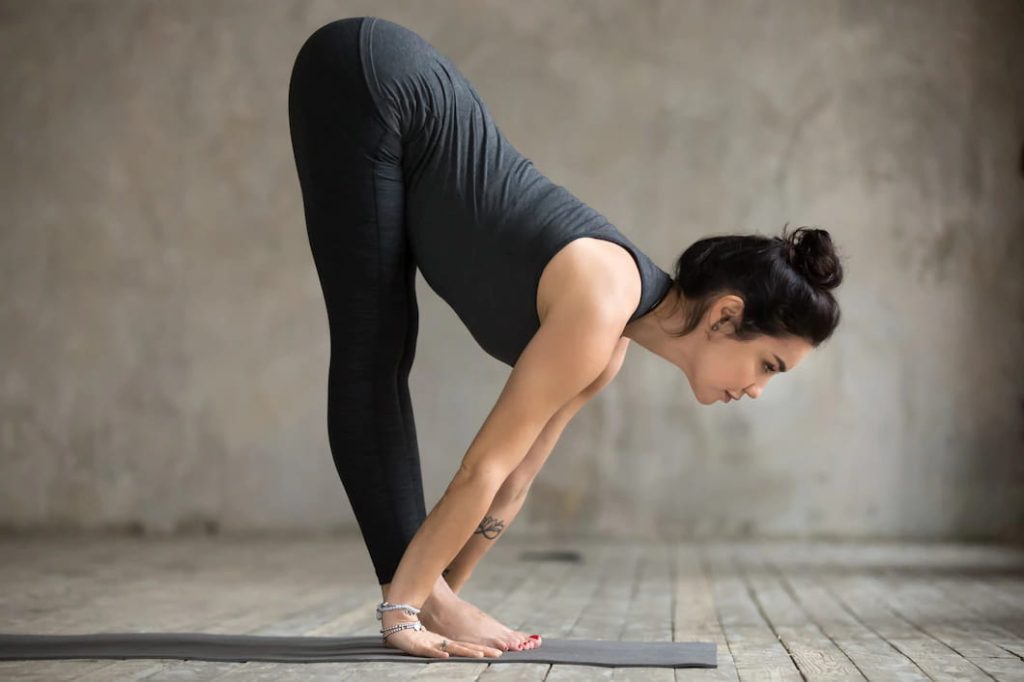
The upward front bend, also known as a forward fold, releases tight, tense shoulders while stretching the hamstrings and back muscles. It is a proven back pain yoga asana for everyone.
How to do Upward Forward Fold Pose?
- Your feet should be shoulder-width apart, and your knees should be relaxed but not locked.
- Exhale and lean forward, bending at the waist, reaching for the floor.
- If, at first, you cannot reach the floor all the way, stop where your hamstrings feel stretched comfortably.
- Five to seven times, repeat the stance. Hold the position for 5–10 breaths after the final bend.
Also Read- Yoga for Endometriosis & Pelvic Pain Relief
7. Urdhva Mukha Svanasana (Upward Facing Dog)
Your chest will open up, your abdominal muscles will expand, and your back will become more active in this pose. Among the list of the top yoga poses for lower back pain, this is one of the most effective asanas.
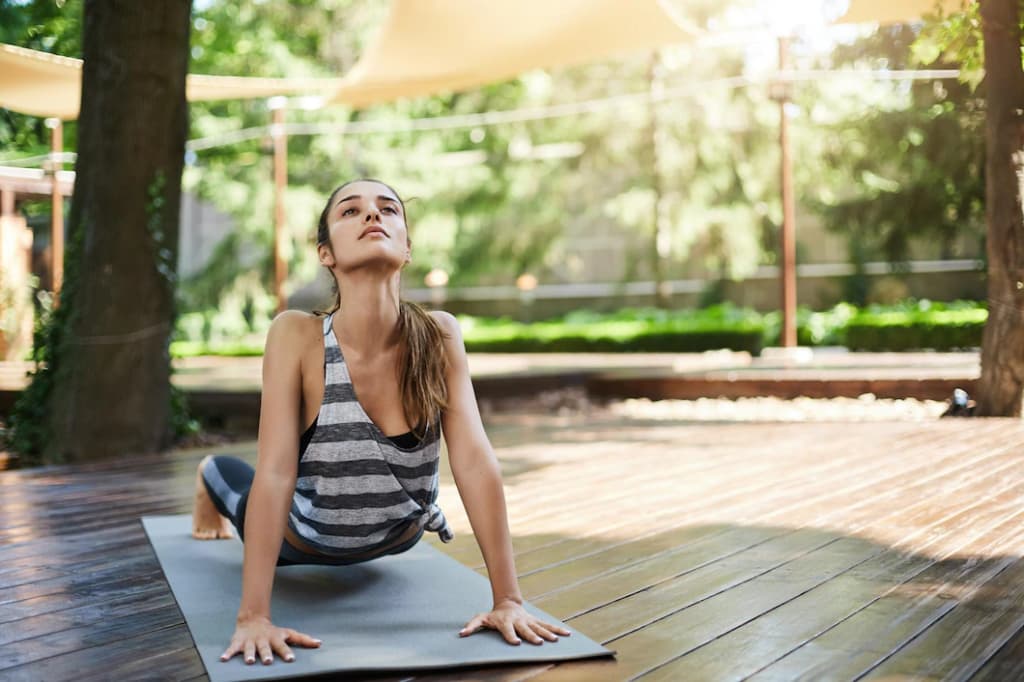
How to do Upward Facing Dog?
- Laying down on the ground with your palms facing down by the middle of your ribs is a good place to start.
- Draw your legs together and press the tops of your feet into the ground while lifting your chest off the floor using your back strength, not your hands.
- Keep your legs straight out in front of you at first.
- Repetition is required. For five to ten breaths, hold the position.
FAQs Related to Yoga for Lower Back Pain Relief
Yoga is a gentle exercise that is great for preserving flexibility and strength in the back. It’s also one of the more efficient methods for easing low back pain, which is the leading cause of discomfort and incapacity.
There are so many poses that can help with back pain. Some of these are:
1. Adho Mukha Svanasana
2. Balasana
3. Eka Pada Rajakapotasana
4. Utthita Trikonasana
5. Chakravakasana
6. Urdhva Mukha Svanasana
The main reasons behind lower back pain for women can be:
1. Premenstrual syndrome (PMS)
2. Premenstrual dysmorphic disorder (PMDD)
3. Sciatica
4. Endometriosis
5. Dysmenorrhea
6. Disc degeneration
7. Pregnancy
8. Muscle strain
If the pain lasts four weeks or longer or worsens as time goes by, you should be worried about lower back pain.
These are the best natural ways to treat lower back pain:
1. Enjoy an anti-inflammatory drink every day
2. Fall asleep earlier and sleep for a longer duration
3. Avoid prolonged static posture
4. Gently stretch your joints and soft tissues with Yoga
5. Join authentic online yoga programs
6. Try mindful meditation


